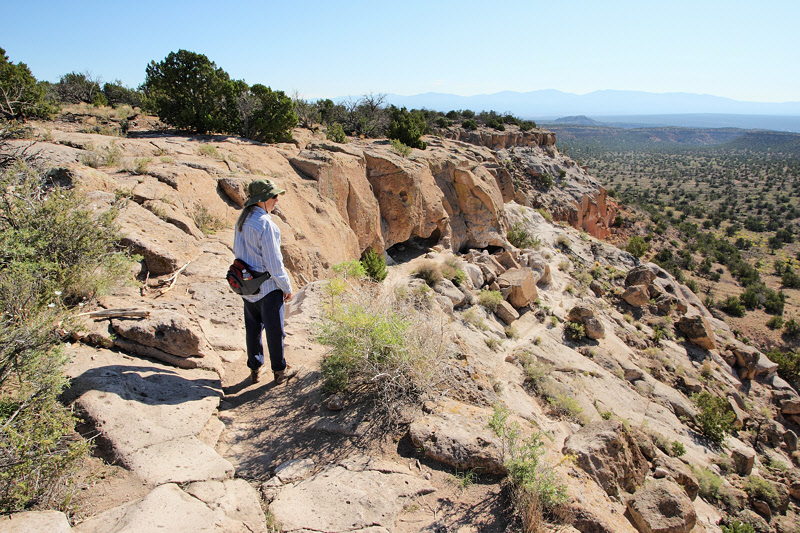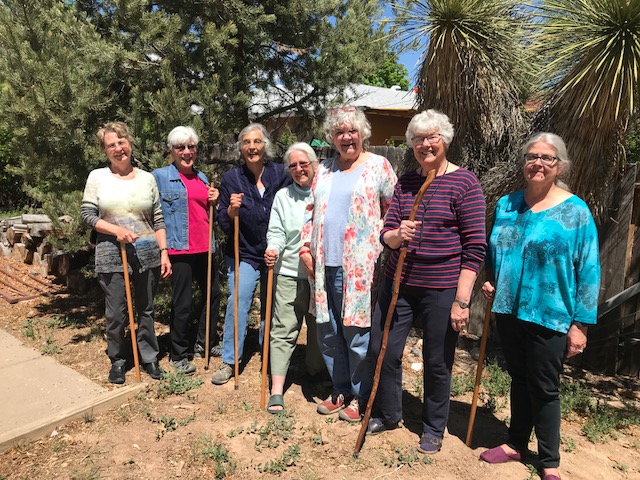
By Sue Watts
“I come into the peace of wild things … the presence of still water.
For a time, I rest in the grace of the world and am free.”
Wendell Berry
I experienced that grace when, with my husband sleeping in the ICU, I sat outside and watched the snow-filled canyon, listened to the wind in the ponderosas, and inhaled the scent of fresh air. Peace settled around me like a blanket.
Physically, mentally, and emotionally, the outside world of nature has so much to offer us in terms of health, particularly in this time of social distancing. Beginning in the early 1980’s, the Japanese introduced the idea of Shinrin Yoku. The idea is to immerse yourself into nature with no purpose other than to experience whatever nature you encounter. Since then, the interest in the health effects of being in nature has grown, and research has followed. Today, connections with nature are considered to be a part of preventative medicine. Globally, researchers have documented physical, emotional, and mental gains from a close encounter with nature.
On the physical front, walking, hiking, and biking are active pursuits that strengthen muscles, the heart, and lungs and can lead to weight loss. Research into the inner, often immediate, physiological effects of being in nature has shown that blood pressure numbers lower, heart rate slows, immune function improves, and the parasympathetic nervous system kicks in to help us “rest and digest.”
Responses from nearly 20,000 participants from the UK in survey data collected in 2014 to 2016 helped an English group discover that spending at least two hours in nature per week was strongly correlated with positive, healthy results. Four half hours, several hour-long excursions, or a two-hour stroll produced similar results.

If you are not able to walk or get to a trail, explore your yard for signs of spring or find a “sit spot” where you can view the world. It will improve your mood. You can meditate, do deep breathing, or just sit there letting nature slowly reveal itself. For this exercise, it is not a question of how many things you can capture, but of what comes to you. Twenty minutes several times a week is often a suggested time frame for mood improvement.
For those of you interested in mental stimulation, research has shown that if we remain unconnected to technology while taking time to be outside, our creative problem solving abilities increase by 50 percent. Cognitively, being outside helps us to focus more intently. Time outdoors has shown a positive effect on children with ADHD.
How do we reap the benefits of being outside responsibly during this time of social distancing?
Atlas Obscura spoke with a few experts who have been studying the behavior of COVID-19 in the outdoors. Here are a few excerpts:
- The virus “dissipates quickly outside, both becoming less dense in the outside air volume and more easily destroyed by UV light,” says Ellen Jo Baron, professor emerita of pathology at the Stanford University Medical Center. In other words, the coronavirus has a harder time spreading en plein air, perhaps even more so in sunny places.
- Dr. Timothy Brewer, an epidemiology professor and member of the Division of Infectious Diseases at UCLA adds, ““The concentration of virus drops off very quickly as you get farther away from a person”
PEEC recently released some tips on how to safely use our trails during COVID-19. Please keep them in mind while you are out on your journey. Observe the usual pandemic-related caveats: maintain at least ten feet of distance or hike separately, keep your hands away from your face, wash or sterilize your hands when you come home or before you dig into snacks. Avoid finding yourself in a long line of people snaking their way down a trail like one giant organism.
Hikers should also take the following safety measures:
- Let someone know where and for how long you plan to walk.
- Be aware of your surroundings and the way back to the trailhead (walk within a known set of boundaries like a road, canyon rims, the downward slope of a drainage).
- Take plenty of water.
- Wear sunscreen.
- Stay off trails if the wind is blowing the hat from your head.
- Keep the bears socially distant. Apparently, the most effective bear deterrent is the sound of the human voice, so belt out a song or two as you walk.
“Deeply encoded in our psyche is the awareness that comfort, peace, and healing can be found in a forest. … It resets our nervous systems … so quickly and effectively, it is as if we have come home.”
M. Amos Clifford, founder of the Association of Nature and Forest Therapy Guides
If you like, share some of the times you have experienced a lift from nature … physically, mentally, or emotionally.
Want to investigate further?
- Spend 15 minutes listening to the sounds of rain in Olympic National Park.
- Learn about how different parts of nature influence human health with this interactive graphic.
- Learn more about the University of Derby’s Nature Connectedness Research Group here.
Passport to the Pajarito Plateau:
If you plan to hit the trails, be sure to bring along your Passport to the Pajarito Plateau. Once the nature center re-opens, we can catch you up on the prizes you earned! If you don’t have the passports at home, you can download and print these two-sided versions: Passport 1, Passport 2, and Passport 3.
No printer? No problem. Just use a sheet of scrap paper or take pictures with the rubbings.
